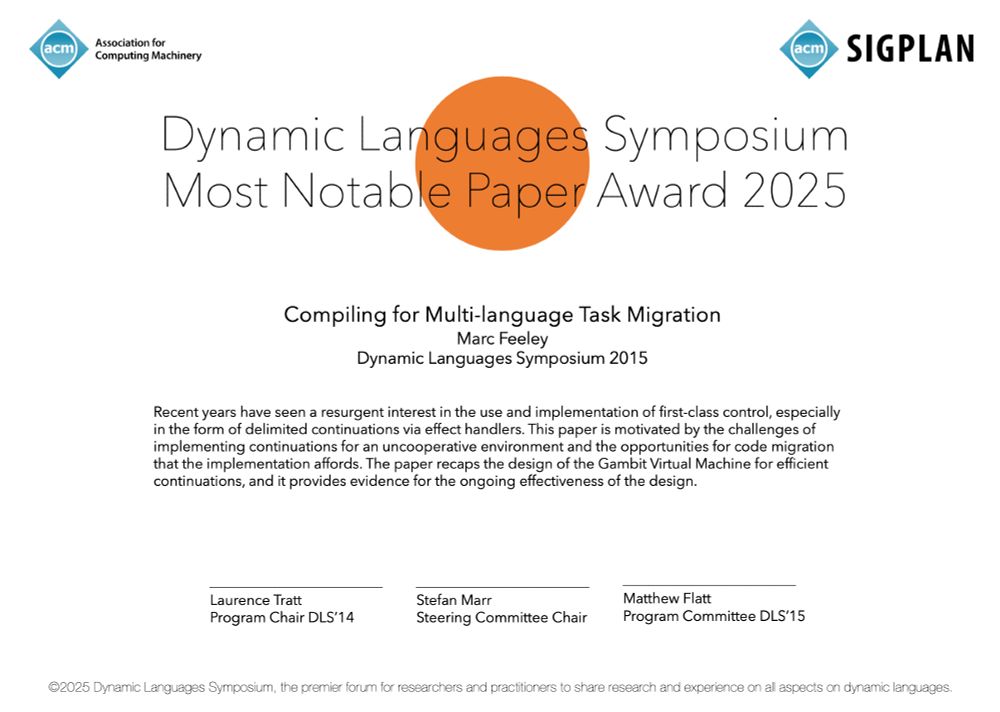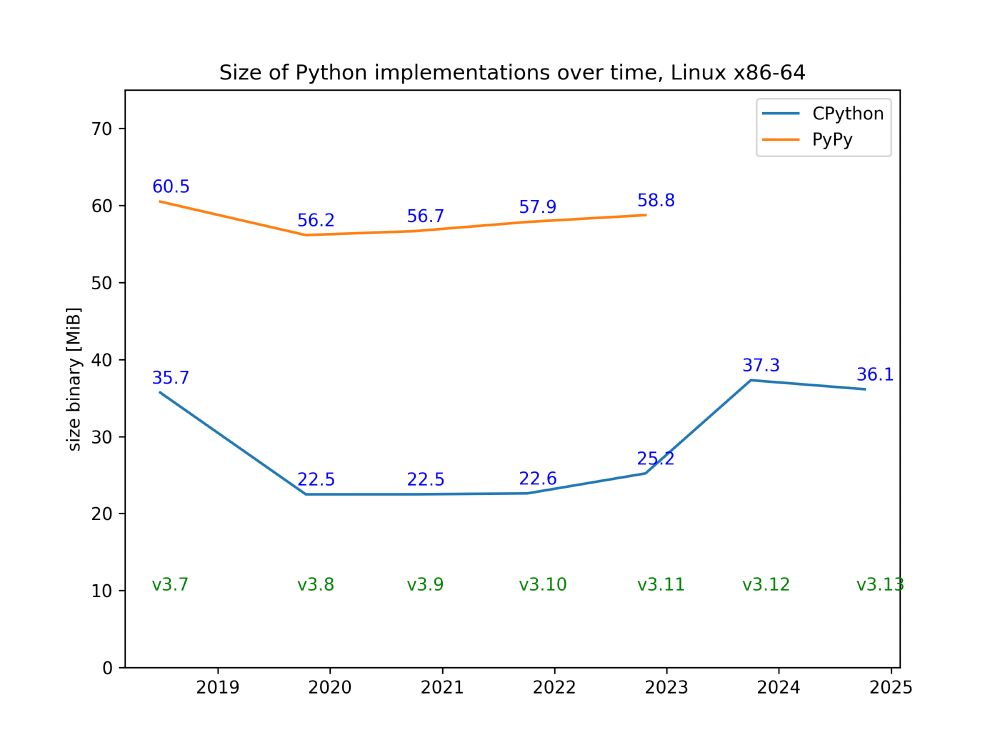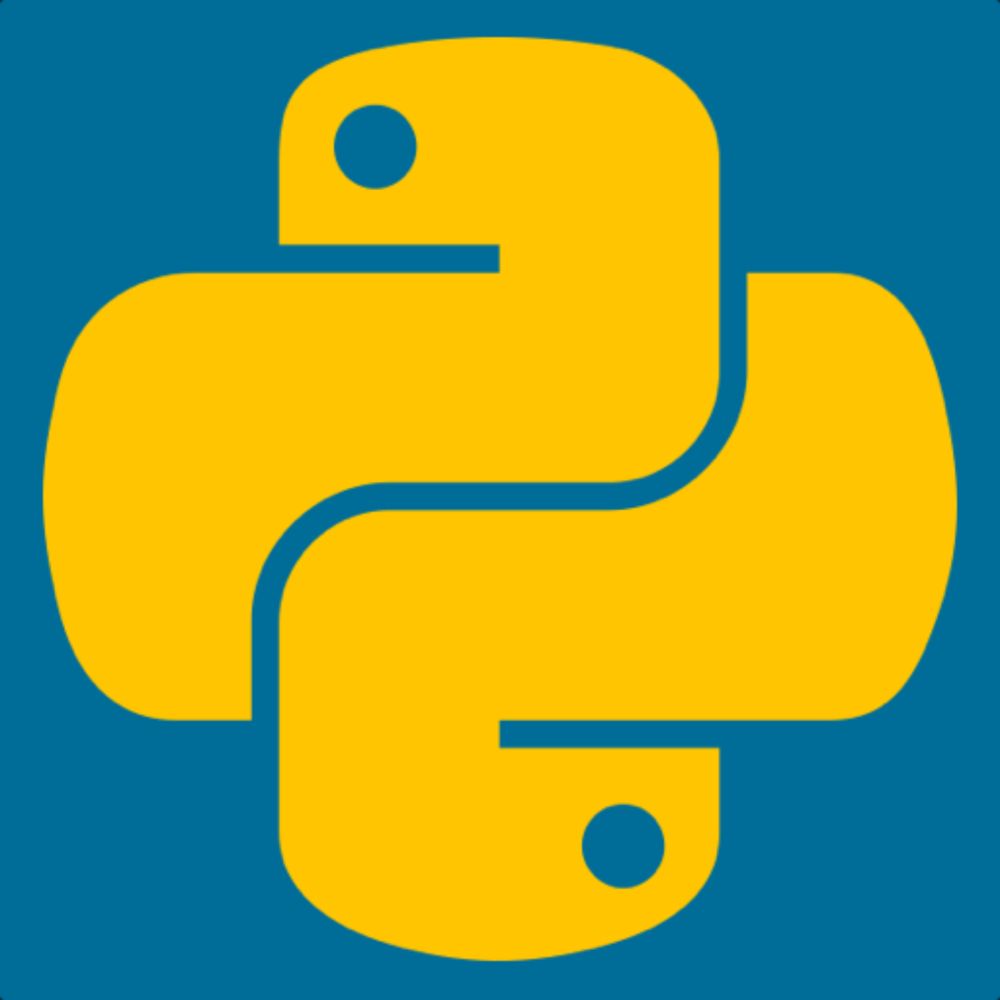https://pypy.org/
https://github.com/pypy/pypy
- **📋 Full Announcement:** github.com/crossbario/a...
- **🌐 WAMP Protocol:** wamp-proto.org
- **📋 Full Announcement:** github.com/crossbario/a...
- **🌐 WAMP Protocol:** wamp-proto.org
Compiling for Multi-language Task Migration
by Marc Feeley
The paper is motivated by the challenges of implementing continuations for an uncooperative environment, and worth a read!
Congratulations to the author! www.iro.umontreal.ca/~feeley/pape...

Compiling for Multi-language Task Migration
by Marc Feeley
The paper is motivated by the challenges of implementing continuations for an uncooperative environment, and worth a read!
Congratulations to the author! www.iro.umontreal.ca/~feeley/pape...
Spoiler: for the microbenchmark I tried, the slowdown of the meta-tracing interpreter is about 900x
Spoiler: for the microbenchmark I tried, the slowdown of the meta-tracing interpreter is about 900x
After nearly two years, I think this is finally ready: coverage․py
can use sys.monitoring to more efficiently measure branch
coverage.
After nearly two years, I think this is finally ready: coverage․py
can use sys.monitoring to more efficiently measure branch
coverage.
"Low Overhead Allocation Sampling with VMProf in PyPy's GC"
pypy.org/posts/2025/0...
Hopefully the first in a series about his work on a sampling allocation profiler for PyPy
"Low Overhead Allocation Sampling with VMProf in PyPy's GC"
pypy.org/posts/2025/0...
Hopefully the first in a series about his work on a sampling allocation profiler for PyPy


(the results are complicated, on one version Python 3.13 wins, but on others PyPy does).

(the results are complicated, on one version Python 3.13 wins, but on others PyPy does).

(the results are complicated, on one version Python 3.13 wins, but on others PyPy does).
Two cool other features in the thread below.
pypy.org/posts/2025/0...
Two cool other features in the thread below.
pypy.org/posts/2025/0...

